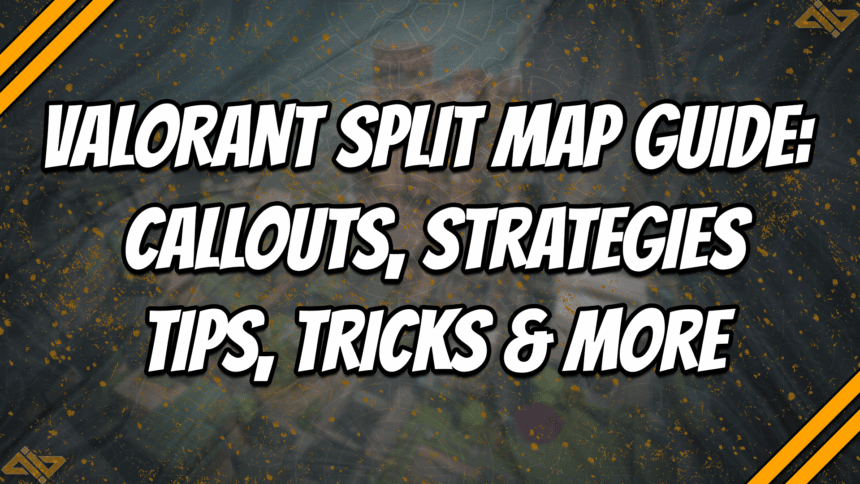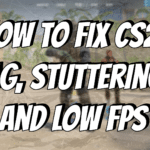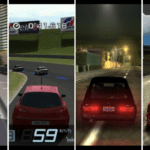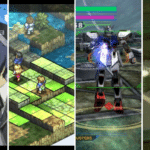You need to master the different maps in Valorant if you want to climb the Valorant ranks. Each map is uniquely designed, so the strategies for one map won’t be as effective on a different one. Not to mention the different Agents, smoke spots, and other tips. This is why we’ve decided to create a Valorant Split map guide to help players out.
Split is one of the best maps in Valorant, and the community felt bad since Riot removed it from the competitive map pool in Patch 5.0. It eventually returned in Patch 6.0 with a couple of changes.
Brush up on your map knowledge and get ready for the return of Split to the competitive pool. Here’s our complete Valorant Split map guide, complete with callouts, tips, tricks, and more.
Valorant: Split Map Guide

Each map in Valorant has its own unique trait or gimmick. Bind has its teleporters, Breeze has wide and open areas, and Haven has three sites. Riot decided that they wanted Split to have a crucial middle area that was essential to capturing or defending the two sites.
Mid connects to both sites via mail and vent. This is why mid on Split is always highly contested by both sides. Controlling mid gives you the power to decide which site to attack and gives you a crucial advantage.
Split is also the first map to use “ascenders,” more commonly called ropes or zip lines. There are ropes located to help you get from A lobby to sewers, B side hell to tower, and vents. Now, there are a variety of maps that use both vertical and horizontal zip lines to help make movement easier.
Split was one of the maps released during the Valorant Beta. It’s located in Shinjuku, Tokyo, Kantō, Japan, Alpha Earth. Split represents the conflict between two groups in Shinjuku. On A site, you can see the continuous development of Kingdom Corporation with its offices and shops towering over the site.
On B site, you can see the locals trying to fight back and go against the removal of their homes and their prestigious culture. This is why you can see various things on B site, like traditional Japanese homes, authentic Japanese shops and food, and even some bamboo trees.
Valorant Split Map Guide: Callouts and Strategies

Split has a 50.05% win rate for attackers and a 49.95% win rate for defenders across all regions. This means that the recent changes to Split worked well and made it a fairly balanced map for both sides.
Agents like Raze and Sage were among the most commonly used on Split. Having an Agent like Sage, who can stop pushes from mid, is one of the best and easiest strategies, especially in the lower ranks.
Most of the time, both sides should fight for control over mid. For attackers, getting control of mid gives you the most options and flexibility. While for defenders, you’re taking away a huge power position from attackers.
Let’s move on to the different areas of Split and talk about the callouts, strategies, and positions each side should play. These are the most common callouts used by the community. Anyone who has played Valorant for a significant amount of time should know these callouts.
A Site Callouts, Strategies, and Positions on Split
Next on our Valorant Split map guide, we have the callouts, strategies, and positions for A site. Knowing the different callouts allows you to be more precise with your comms and increase your team’s chances of winning games.
For attackers, you’ll have two ways to attack from A main. You can charge directly onto the site or take the ramp toward heaven and secure control of that area. Taking the site lessens the number of corners you’ll have to clear in exchange for a bit less map control. However, controlling heaven allows your mid players (if any) to safely rotate to A site.
After planting, you can play from elbow, site, hell, or retreat back to A main for lineups. These are great spots to hold since it pretty much covers all the places that the defenders can come from. If you’re feeling confident, you can also push through screens into heaven or spawn to gain more map control.
As for defenders, using an OP on screens or rafters to peek A main is generally one of the most common angles. You can also peek early from ramps if you have an escape ability. Other common angles to hold are back site and elbow. Although, these are a bit riskier since there isn’t much cover on the site.
If you’re looking for some cheeky plays, you can perform an early peek from A main and try to catch opponents off guard. Hell and flowerpot are also great cheek spots to play from. However, they are generally one-and-done spots unless the opponents don’t clear you or you have really good aim.
B Site Callouts, Strategies, and Positions on Split
If you’re attacking from B main, there’s only one way onto site. It’s a bit of a choke point, and defenders can easily use mollys, traps, and other utilities to stop attackers from entering. However, if you can get to the site, you can safely plant on default. There are tons of angles to clear on B site, so make sure to make use of your abilities to check these corners.
When it comes to playing post-plant, you can stay back site, push through alley, play lineups from B lobby, or push through heaven. There are quite a few choices for attackers, but most are risky plays that can either win or lose you the round, depending on how well it goes.
For defenders, it’s quite common to challenge garage with an OP early on. You can also play from rafters or heaven if it doesn’t get smoked off. Of course, you can also hold from the site itself, peeking onto B main and simply retreating if you can’t hold them off.
You can play on top of boxes/stack and behind the metal box on default for those cheeky or aggressive players out there. These are great shotgun areas where you can possibly get multiple kills in one-go. You can also choose to play behind board with a rifle and hope that you don’t get cleared. This is a riskier, yet more rewarding play.
Middle Area Callouts, Strategies, and Positions on Split
Finally, the next part of our Split map guide will focus on the middle area. We can’t stress how crucial the middle area is for winning the game.
Attackers can peek from ramen or sewers into vents or mail respectively. Although, I do suggest using some utility first since Operator players like to hold these angles. It’s generally a good idea to use a flash here and then peek to try and get some easy kills.
You can also choose to use intel-gathering abilities like drone or dog on mid to check who’s holding the area. Just make sure to destroy Sage’s wall if ever she uses it so that the util can pass through. Mid is also a great lurking area. Agents like Yoru or Omen can work well alone if you delay your attack and your team sells a push from one of the two sites.
For defenders, we’ve already mentioned that mid is a great area for Opers. If you don’t use the OP, you can still hold the angles from vents or mail. You can also play it a little safer by going deeper inside vents and only checking for crosses towards mail.
Sage works well on mid because her wall blocks it off. It creates a chokepoint that your team can take advantage of. Playing a cheeky angle on the metal box near top mid or the corner of mail can help you secure a kill or two using a shotgun.
Split Map Guide: Best Smoke Spots
The next section of our Valorant Split map guide will be about all the smoke spots you can use. Even if you aren’t a Controller main, it’s still great to learn the best smoke spots on any map. This helps you know which areas are commonly smoked and can help you adjust your game around it.
Here are the best smoke spots for every area on Split.
Best Smoke Spots on A Site
Let’s start things off with the smoke spots for A site. There are a few crucial areas here that you’ll always want to cover. Screens and heaven are essential smokes you need to place as attackers if you want to have some level of safety when entering. These are pretty much non-negotiable smokes unless you want to challenge screens with a flash or some utility.
You can also smoke ramps if you’re planning on directly going onto the site and know there are player/s peeking at that spot. Elbow can also be a good area to smoke since it’s also a common angle to play. To save on smokes, you can position your smoke right in the middle of screens and elbow.
For wall-based Agents like Viper or Harbor, you can throw your wall from sewers and cover heaven and ramps. The only long-range angle left for you to clear is screens. You can also use a diagonal wall that leads you directly to the site. The only problem with this is that you’re only left with a little bit of map control.
The only crucial area you’ll almost always want to smoke for defenders is A main. This forces enemies to either wait for the smoke to end or swing out of it, putting them at a disadvantage.
A defensive wall on A site would be blocking off the A main entrance. This simply follows the same principle as the smokes.
Best Smoke Spots on B Site
The B site has more areas that you need to cover. Usually, heaven and alley are the best areas to smoke. However, having one close right of B main can also be beneficial, especially if there’s no Sage on your team. Heaven can be quite tricky to smoke at first, but with a bit of practice, you can easily find the right position to smoke.
Viper or Harbor’s wall is pretty straightforward here. Just use it horizontally from B lobby and make sure that it cuts off heaven and rafters. After that, there are only a few areas left for you to clear, and your team will have a safe way onto the site.
Defenders only need to smoke off B main, and you’re pretty much good. It’s a chokepoint that you can use to hold off pushes by using smokes and then following up with other utilities. You can use walls with the same principle in mind. Just deploy your wall so that it blocks off B main and call it a day.
Viper’s Toxic Screen can reach and cover mid if you deploy it from B main. If that’s the case, just make sure to ask your mid or vents player if they want the wall on or off. It’s a great wall that can hit two birds with one stone as long as you communicate with your team.
Best Smoke Spots in Middle Area
Finally, we have the middle area. The smokes here are pretty easy to do since mid is a very small area. You basically only need to cover either vents or mail, depending on where you plan to attack.
If you’re planning to attack A site, your best option is to smoke mail and then try to challenge vents using your abilities. On the other hand, if your goal is to attack B, then smoke off vents and push through mail. Just be careful of any enemies that might push your smoke.
There aren’t that many great walls for the middle area since it’s such a small portion of the map. It’s quite a waste of your walls. I highly suggest using your Cove or Toxic Cloud for mid instead and reserving your walls for the site you’re going to attack.
For defenders, your best course of action is to smoke the two exit points on mid. This means smoking sewers and ramen. Of course, you can always smoke sewers, then focus on ramen and vice versa. As we’ve mentioned, Sage wall also works great in mid, allowing you to delay your smokes a little later in the round.
Walls aren’t worth using in mid, whether you’re attacking or defending. However, some walls can reach mid, like the one we’ve mentioned before from B main. This definitely helps defend mid as well. Aside from that, you’re better off saving your walls for retaking sites after the Spike has been planted.
Best Team Compositions to use for Split
The next section of our Valorant Split map guide will talk about the different team compositions that work well on Split. Here are some of the best team compositions used by professional teams and by some of the best Valorant players in the world.
- Omen, Sage, Raze, Cypher, Skye
- Omen, Raze, Jett, Sage, Cypher
- Omen, Viper, Breach, Fade, Raze
- Omen, Sage, Raze, Cypher, Breach
- Astra, Sage, Viper, Raze, Fade
- Astra, Fade, Raze, Viper, Breach
As you can see, there are a variety of lineups that can work well on Split. It will mostly depend on your team’s tactics and strategies, but the mainstays are definitely Raze, Sage, and Omen.
Split Map Guide: Best Agents to Use
This final section of the Split map guide will focus on the best individual Agents to use. These Agents are perfect for those solo queue demons trying to grind the ranks. They should fit in most team comps and will be effective at almost any skill level.
- Omen
- Astra
- Viper
- Sag
- Cypher
- Killjoy
- Fade
- Raze
- Jett
Conclusion
Those were all the tips, tricks, callouts, and strategies that we have for you on Split. Hopefully, you were able to learn a thing or two in our Valorant Split map guide that can help you on your ranked journey.
Let us know your favorite part about Split in the comments.









































